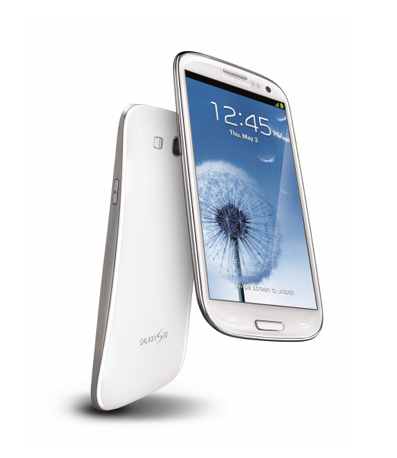Last week we wrote an article focused on IHS iSuppli’s full tear-down of the iPhone 5. The new iPhone boasts impressive details, including a larger, 16:9 aspect ratio, “in-cell” technology screen with an Apple-defined retina quality display. Apple’s retina displays on both the iPhone and new iPad continue to be stunning visual achievements and some of us believe that the overall colors achieved with the new iPad and the iPhone 4S are superior to that offered by the Samsung Galaxy S III, which is Samsung’s current display quality champion. The screen quality on the iPhone 5, from our observations, is at least as good as the iPhone 4S and technically, with deeper colors and the ability to work well in less light, it is a superior display to the 4S.
Technically speaking however, it turns out that the display on the Galaxy S III - per analysis provided by IHS iSuppli - is superior to the iPhone 5 display, though the question remains as to whether or not the differences are marginal or non-trivial. The answer is difficult to pinpoint, as is the case with the question of user preference.

Image via www.samsung.com
A key differentiator is what is referred to as “color gamut,” which refers to a complete set of defined colors within many possibilities, as defined by a specific subset of all available colors. One such subset is provided by the National Television System Committee (much better known as NTSC), which is a suitable standard against which to match smartphone displays. Very interestingly, IHS iSuppli has analyzed the NTSC color gamut for both the new iPhone 5 display as well as for the Galaxy S III. The results are that the iPhone 5 delivers 72 percent of the NTSC color gamut standard, while the Galaxy S III display delivers a complete 100 percent. The Galaxy S III screen itself is also actually thinner than the new iPhone screen, with a thickness of 1.1 millimeters vs. 1.5 millimeters respectively.
On the face of it, this would seem to suggest that the Galaxy S III display is indeed superior to the iPhone 5 display. Technically speaking, that is.
Practically speaking, it probably doesn’t matter to users. For example, we prefer the iPhone 5 display to the Galaxy S III, which we have used for an extended enough period of time to have an opinion on. Other users may very well disagree, but we suspect that overall, users may find the Galaxy S III to be over saturated. Vinita Jakhanwal, director for Small & Medium Displays at HIS, notes that “Some user reviews indicate that colors presented on the Galaxy S III actually can look oversaturated and unrealistic. While it may be interesting to compare the display specifications for the two phones, the actual front-of-screen viewing experience could diverge for different users.”
Jakhanwal further adds that “Although the iPhone 5 technically trails the Galaxy S III in the display specs race, the iPhone 5 overall remains thinner than the Galaxy S III, and its display color gamut is more than sufficient for most users. Such improvements on the iPhone 5 are consistent with Apple’s philosophy of selecting features designed to yield profitable products that deliver a superior customer experience, rather than of providing technology for technology’s sake.”
The one feature – based on the display technologies used, where the Galaxy S III may have an advantage that matters is in power consumption. The S III employs an active-matrix organic light emitting diode (AMOLED) display, as all better quality Samsung smartphones do. The iPhone 5 uses what is referred to as a low temperature polysilicon (LTPS) LCD technology. AMOLED displays do not use a backlight unit, meaning that they should have better overall power efficiency than LCD displays. Per IHS iSuppli, there are concerns about differential aging of organic materials, which affects OLED lifetime and, ultimately, power efficiency.
The number of real world hours that a Galaxy S III provides, however, may not be notably different relative to ongoing real world usage. Although display power consumption is important, overall battery life of the device will still be dependent on many other power consumption factors – many of which Apple has addressed in the design of and the actual parts used in the iPhone 5. For example, the new A6 processor is much more efficient, as is the use of the LTE chipset from Qualcomm that Apple chose to deploy.
Want to learn more about today’s powerful mobile Internet ecosystem? Don't miss the Mobility Tech Conference & Expo, collocated with ITEXPO Austin 2012 happening now in Austin, TX. Stay in touch with everything happening at Mobility Tech Conference & Expo. Follow us on Twitter.
Edited by
Brooke Neuman  QUICK LINKS
QUICK LINKS